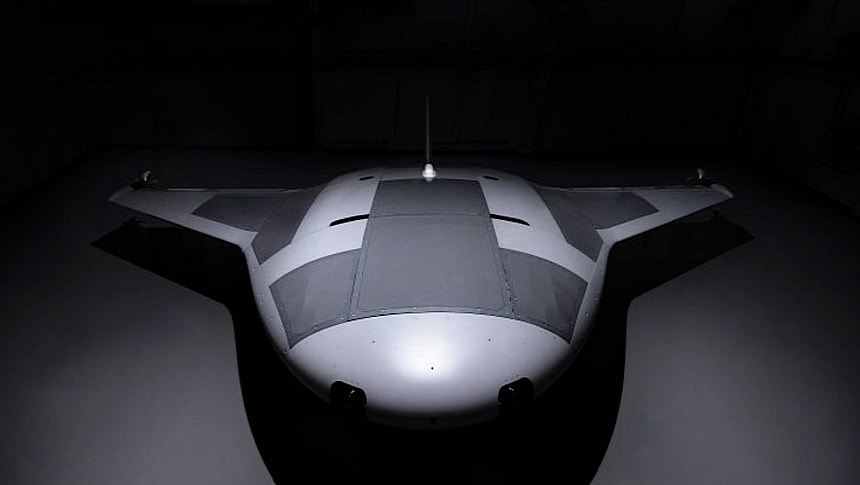Four years ago the Defense Advanced Research Projects Agency (DARPA) announced a program aimed at creating a multi-use underwater drone capable of operating on "long-duration, long-range missions in ocean environments."
The agency called it Manta Ray, and in 2021 it tasked defense contractors Northrop Grumman and Martin Defense Group (now called PacMar Technologies) with creating two full-scale demonstration vehicles for testing purposes. One of the companies, Northrop Grumman, announced this week it has "completed assembly" of its prototype.
The company refers to the Manta Ray as an uncrewed underwater vehicle (UUV) and describes it as an extra-large glider - you can have a look at it in the main photo of this piece. No actual details about the prototype were announced, but we do know to some extent what DARPA was looking for from the get-go.
The first use case of the Manta Ray will, of course, be military, but as it happened so many times in the past, civilian applications could easily be envisioned for the technology.
In military-spec the drone should be capable to "give the combatant commander an amplification of capacity without disrupting current operations," which clearly means Manta Ray will come as an augmentation of current capabilities, and it's not meant to replace anything.
The drone should be powered by novel technologies, including ones capable of harvesting energy from underwater sources. What exactly that means is unclear at this point.
Because it is supposed to operate in very unfriendly environments for very long periods of time, the Manta Ray should be made of materials capable of protecting it against biofouling, corrosion, and other types of material degradation that usually occur in the water.
When it comes to its capabilities, things are as murky as with everything else. DARPA requested a machine that can use "low-power means of underwater detection and classification of hazards or counter detection threats."
Northrop Grumman's design has been built in such a way as to be able to carry unspecified payloads in undersea missions with no need for on-site human logistics.
As for the PacMar design, last we heard of it was back in October last year, when an unrelated submersible platform was used to test the Manta Ray's sensors, hydrodynamics, and autonomy. The tests were conducted in Oahu, Hawaii, and also included an in-water splash drop.
Although one Manta Ray is currently complete, there is no telling when the first tests with it will be conducted - word has it we may see one as soon as this year, coming from Northrop Grumman.
DARPA did not communicate a timetable for the development of the drone, at least not publicly. We will of course keep an eye on this story and update as soon as more details become available.
The company refers to the Manta Ray as an uncrewed underwater vehicle (UUV) and describes it as an extra-large glider - you can have a look at it in the main photo of this piece. No actual details about the prototype were announced, but we do know to some extent what DARPA was looking for from the get-go.
The first use case of the Manta Ray will, of course, be military, but as it happened so many times in the past, civilian applications could easily be envisioned for the technology.
In military-spec the drone should be capable to "give the combatant commander an amplification of capacity without disrupting current operations," which clearly means Manta Ray will come as an augmentation of current capabilities, and it's not meant to replace anything.
The drone should be powered by novel technologies, including ones capable of harvesting energy from underwater sources. What exactly that means is unclear at this point.
Because it is supposed to operate in very unfriendly environments for very long periods of time, the Manta Ray should be made of materials capable of protecting it against biofouling, corrosion, and other types of material degradation that usually occur in the water.
When it comes to its capabilities, things are as murky as with everything else. DARPA requested a machine that can use "low-power means of underwater detection and classification of hazards or counter detection threats."
Northrop Grumman's design has been built in such a way as to be able to carry unspecified payloads in undersea missions with no need for on-site human logistics.
As for the PacMar design, last we heard of it was back in October last year, when an unrelated submersible platform was used to test the Manta Ray's sensors, hydrodynamics, and autonomy. The tests were conducted in Oahu, Hawaii, and also included an in-water splash drop.
Although one Manta Ray is currently complete, there is no telling when the first tests with it will be conducted - word has it we may see one as soon as this year, coming from Northrop Grumman.
DARPA did not communicate a timetable for the development of the drone, at least not publicly. We will of course keep an eye on this story and update as soon as more details become available.







